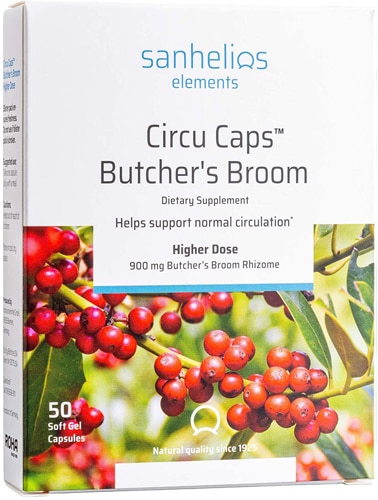Few things blemish a swell set of legs like varicose veins—those ropy, unsightly veins that are most frequently seen in the lower half of the body. Affecting an estimated 50 percent of women and 40 percent of men, they can run the gamut from painless to uncomfortable to downright ouch.
But what are they, exactly? What causes varicose veins, how can they be treated—and how can you do your best to dodge them altogether?
Here’s everything you need to know about varicose veins so that you can be sporting a skirt by spring.
What are varicose veins?
Most commonly seen in the legs and feet, varicose veins are bulging, chord-like veins, often accompanied by clusters of blood vessels that resemble grapes.
While they’re typically a cosmetic concern, not all varicose veins are treated equal. A feeling of heaviness, swelling, burning, cramping, throbbing, itchiness and a general sense of achiness can accompany them. Left untreated and they might also contribute—if not cause—more serious health issues, such as sores or skin ulcers, bleeding (from damage to the vein), superficial thrombophlebitis (or blood clots just beneath the skin) and deep vein thrombosis.
What causes varicose veins?
Happen to recall—perhaps from high school science—how blood moves through your body? Remember this: Arteries carry blood away from your heart and to your tissues. Your veins, meanwhile, carry blood in only one direction: Back to your heart.
Typically, valves in your veins work to avert backward blood flow. “But when the valves are weak or damaged—called venous reflux—the blood can flow in both directions,” Alejandro Badia, MD, explains. When this happens, it can cause blood to “pool” in the veins, thus creating the swollen appearance frequently linked to varicose veins.
The number one cause of this occurring is genetics. As Luis Navarro, MD, and founder and director of The Vein Treatment Center in NYC reports, “The primary factor contributing to the development of varicose veins is heredity or the genetic predisposition to weak vein walls and vein valves resulting in leg vein problems.” In other words, if your mother has them, you might too (but that doesn’t mean you can’t do your best to prevent them—read on).
Hormones also serve as a leading cause of varicose veins, and this includes hormone replacement therapy and birth control pills. Pregnant women are even more susceptible to developing varicose veins, and may see them not just on their legs but also on their “inner thighs, lower pelvic area, and buttocks,” the Office on Women’s Health reports. Why? Blood volume, weight, and hormone production all increase during pregnancy, which amplifies the stress on your veins.
Other causes include age (as aging causes wear and tear on your veins, the Mayo Clinic reminds us), obesity, lack of exercise/a sedentary lifestyle, and running without proper support in your shoes—the impact on hard surfaces can do a number on your veins. And while the belief that sitting with your legs crossed causes varicose veins is a myth, it can worsen varicose veins if you already have them.
How they're treated
While the market is flooded with creams specifically designed—or at the very least packaged—to “treat” varicose veins, experts say don’t bother. Instead, pay a visit to your primary care physician, who will refer you to a dermatologist, a vascular surgeon, or a vein specialist (phlebologist), who will help you determine which form of treatment you may need.
Sclerotherapy, for instance—a fast, painless procedure in which a mild chemical solution is injected into the compromised vein—is often used to treat small varicose veins. “The solution,” health writer Molly Ritterbeck reports, “then collapses the vein, and the body reabsorbs the vein and blood, which is re-routed into a healthy vein.” Larger varicose veins, meanwhile, may need to be treated with a minimally invasive procedure called endovenous laser treatment, which utilizes laser and ultrasound therapies to treat the issue. This procedure generally requires a sedative of some kind (general or local anesthesia, or a sedative). Varicose veins can also be removed through tiny incisions in what’s known as vein stripping. Usually performed by a vascular surgeon, it’s best for large, bulging varicose veins, and requires a longer recovery time than the two abovementioned treatments.
Whatever option your doctor may choose, be sure to act now: Physicians report that it’s vital to stop the natural progression of the disease. Additionally, seeking treatment right away may reduce painful symptoms—and help you nail better cosmetic results.
How to prevent varicose veins
As with a number of health issues—if not most—a healthy lifestyle is key to evading the onset of varicose veins. Chief among those choices is exercise, which promotes circulation. If you have to stand for long periods throughout the day—say, if you work in retail, or at a restaurant—consider wearing compression stockings to help blood flow through your legs and improve circulation. In addition, maintain a healthy weight (extra pounds create extra stress on your veins), eat a diet that’s high in fiber and low in salt, wear high heels and tight hosiery in moderation, and elevate your legs on the daily: It’ll reduce the pressure on your veins—and help you relax while you’re at it.
Consider caring for your swell set of legs with these supplements:







